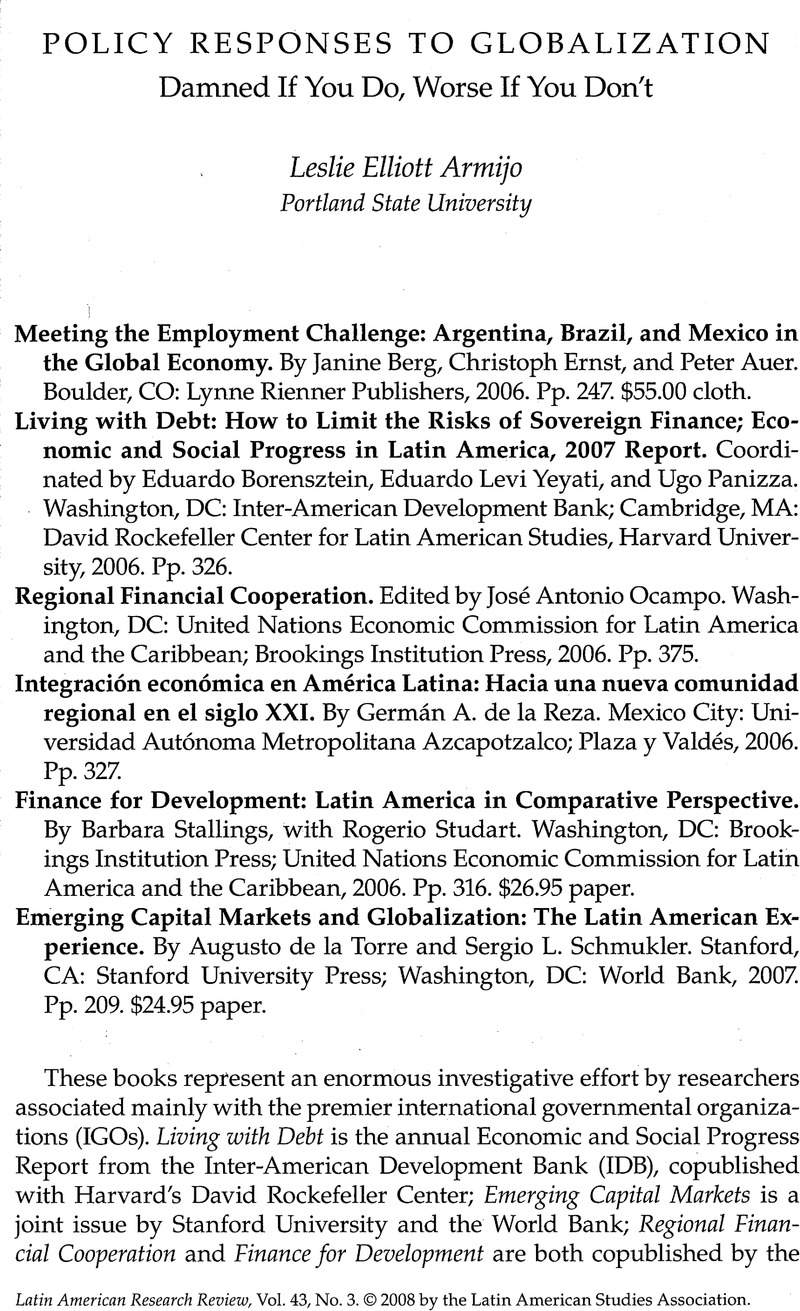Article contents
Policy Responses to Globalization: Damned if You do, Worse If You Don't
Review products
Published online by Cambridge University Press: 05 September 2022
Abstract

- Type
- Review Essays
- Information
- Copyright
- Copyright © 2008 by the University of Texas Press
References
1. See Benjamin J. Cohen, “The Triad and the Unholy Trinity: Lessons for the Pacific Region,” in Richard A. Higgott, Richard Leaver, and John Ravenhill, eds., Pacific Economic Relations in the 1990s: Conflict or Cooperation?, 133–158 (Sydney: Allen and Unwin; Boulder, CO: Lynne Rienner, 1993), and Maurice Obstfeld and Alan M. Taylor, Global Capital Markets: Integration, Crisis, and Growth, 29–41 (Cambridge: Cambridge University Press, 2004).
2. Obstfeld and Taylor, Global Capital Markets, 52–53.
3. Unless otherwise noted, the author compiled all data from online databases of the World Bank, the Bank for International Settlements, and the United Nations Conference on Trade and Development, consulted in November 2007.
4. See also C. A. E. Goodhart, ed., Financial Development and Economic Growth: Explaining the Links (New York: Palgrave Macmillan, 2004).
5. IMF, Press Points for Chapter 4: Globalization and Inequality, World Economic Outlook (Washington, DC: IMF, 2007). Available at http://www.imf.org/external/pubs/ft/weo/2007/02/pdf/4sum.pdf.
6. For a similar endorsement of good institutions, see Ernesto Stein, Mariano Tommasi, Koldo Echebarría, Eduardo Lora, and Mark Payne, coordinators, The Politics of Policies: Economic and Social Progress in Latin America, 2006 Report (Washington, DC: Inter-American Development Bank, 2005).
7. These figures do not include FDI. If they did, the shares for Latin America would be approximately 35 percent and 86 percent in 1995 and 2003, respectively.
8. On the politics of global financial design, see Leslie Elliott Armijo, ed., Debating the Global Financial Architecture (Albany: State University of New York Press, 2002), and Rawi Abdelal, Capital Rules: The Construction of Global Finance (Cambridge, MA: Harvard University Press, 2007).
9. On rising multipolarity, see Leslie Elliott Armijo, “The BRICs Countries (Brazil, Russia, India, and China) as Analytical Concept: Insight or Mirage?” Asian Perspective 31, no. 4 (2007): 7–42, and Parag Khanna, “Waving Goodbye to Hegemony,” New York Times Magazine, January 27, 2008, 34–41, 62–67.
10. On this point, the political scientist's democratic peace theory meets the economist's hypotheses about the necessity of international economic credibility.
11. See Sean W. Burges, “Building a Global Southern Coalition: The Competing Approaches of Brazil's Lula and Venezuela's Chávez,” Third World Quarterly, 28 (2007): 1343–1358.
12. Obstfeld and Taylor, Global Capital Markets, 271–272.
- 1
- Cited by


